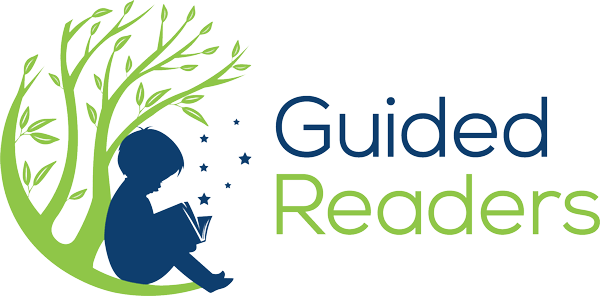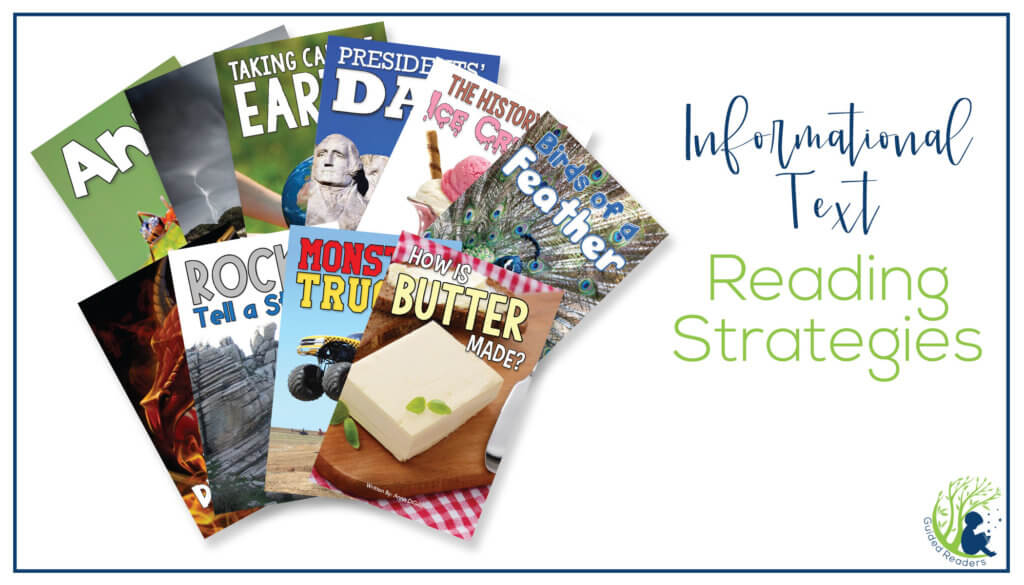As teachers in the primary grades, we love fairy tales and funny stories: mostly because the kiddos in our classrooms love reading them! Although those fictional favorites have an important place and are fantastic vehicles for teaching children to read, our kiddos also need to encounter informational non-fiction texts. Let’s take a look at how we can help our students build their comprehension skills by teaching them informational text reading strategies.
Teach Students About the Text Genres…
It’s obvious that students need to learn to recognize the various types of text genres. From narrative fiction to poetry to non-fiction informational texts, students need to understand the wide variety of literacy forms.
First, help them understand that the various types of texts include differences in text structure, language and text features. Next, they should learn to ask the right questions to uncover meaning from the text, whether fiction or non-fiction.
Give them a Foundation of Targeted Strategies for Text Comprehension

I’ve gone into detail about lesson plans for teaching text comprehension. But by way of review, here are the 14 strategies I believe are the most important for young readers to learn. Teach your students these specific text comprehension strategies; then show them how and when to use them in reading both fiction and non-fiction texts.
- Self-monitoring for comprehension
- Retelling
- Vocabulary development
- Asking & answering questions based on key details in the text
- Identification of main idea and/or central message in the text
- Analyzing characters and their traits
- Making inferences and drawing conclusions
- Summarizing main points of a story or text
- Evaluation of author’s purpose, theme, and point of view (with text evidence)
- Comparing & contrasting
- Analyzing cause & effect relationships
- Identification and use of nonfiction text features
- Understanding text structure (sequential, chronological, descriptive, cause/effect, etc.)
- Understanding fact vs. opinion
Build on the Structure

In What Research Has to Say About Reading Instruction (© 2002, National Reading Association) , Nell K. Duke and P. David Pearson explain that when students begin learning to analyze informational text structure, they gain valuable aids for both comprehension and recall. “In general, the research suggests that almost any approach to teaching the structure of informational text improves both comprehension and recall of key text information.” (Duke and Pearson)
From early-on, students have a basic understanding of the structure of simple non-fiction texts. Even prior to entering school, they have encountered narrative stories. When you give them comprehension strategies and teach them to understand text structure and text features, they’ll begin to develop a basis for understanding. These concepts are foundational for “thinking about the texts”–analyzing and making meaning from non-fiction informational or expository texts. To prepare your students for the various types of texts they’ll encounter as they progress through subsequent grades, give them tools for understanding text structure, and teach them to read for information.
In Informational Text Reading Strategies, Content and Structure are Best Buds
“From a classroom teacher’s perspective, there is some comfort in knowing that content knowledge and text structure are naturally intertwined; after all, either or both represent legitimate curricular goals.”
–Nell K. Duke and P. David Pearson (2002). What Research Has to Say About Reading Instruction. National Reading Association

When you teach informational text reading strategies, you are not ignoring or sacrificing content. Content and structure are not at odds with one another—rather, they build upon and support each other. The structural elements in an informational text are designed to guide the reader through the content. Your students will build meaning and comprehension as they evaluate text structure and text features. The very process of evaluating the structure of an informational text naturally leads the reader to encounter and analyze the content. As your students read for information, they will build meaning and make connections.
The same holds true for other non-fiction text features such as graphs, charts, tables and illustrations. As the student reviews the text in order to search for and identify these features, they will encounter information that the author laid out with the purposeful goal of making it easier to read, follow and understand.
As Duke and Pearson explain with regard to these types of graphic organizers, “The point about visual representations is that they are re-presentations; literally, they allow us to present information again.” (Nell K. Duke and P. David Pearson. What Research Has to Say About Reading Instruction. National Reading Association. 2002)
Structure Helps Them Sum It Up
When students understand the concept that there are various types of text genres and each genre utilizes certain recognizable text structures, they’ll be better able to connect with a text and summarize it.
Text structure simply refers to the way a text is organized. To teach text structure to your students, explain that authors organize their information in a purposeful way within the text. Show them how the author builds or structures his or her ideas within the text. Then help them learn to identify the the various text structures of description, sequence, cause & effect, compare & contrast, problem/solution, and argument.
Teaching students summarizing skills will serve them well. Help them learn to identify key details, and show them how to eliminate unnecessary points or redundant content.
Teaching Informational Text Reading Strategies
Here are a few guidelines to help you teach students to identify and analyze the structure and features of an informational or expository text:
Model and Demonstrate Strategies to Help Students Navigate Text Features Within Informational Texts

Start by providing whole group instruction using a big book that incorporates a number of recognizable text features.
Much like a picture walk with a fictional text, take a “Text Feature Walk” to walk your students through the process of identifying various text features included within an informational text. Point out various text features and lead the students in a discussion of each one. Leaf through the text and show them how to identify and use features such as the Table of Contents, glossary, maps, and graphs. Create an anchor chart to organize and record their thoughts.
Teach them to notice and read the captions beneath pictures, and show them how the author uses print features such as bold, italics and underline to highlight important facts or key details.
Give Your Students Guided Practice Time to Get Familiar with Informational Text Features
Show your students how useful text features can be! Explain how the table of contents, headings and other features can help them locate and recall the information they read, Give them guided practice time: place students in groups of 3 or 4, and give each group a basket of nonfiction books. Allow each student to choose a book and search for and mark an identifiable text feature. (I called this our “Scavenger Hunt,” and I explain how I did it in an earlier post. Click here to read it!) Help them learn to recognize and utilize text features. As a result, those kiddos will reap big benefits! They’ll experience better recall and make deeper connections with the texts they read.
Help Students Learn to Identify and Analyze Text Structure Within Informational Texts

Start by explaining that text structure is simply the way an author has organized the information within a text. Like building a house with a wood frame, concrete blocks, logs or bricks, the author has a structure in mind when he or she begins to write. The author uses words to form a structured framework that will house the information they want to share. They begin with a foundation and build upon it in a purposeful, organized way. Just as an architect creates a floorplan for a home, an author creates a purposeful, planned structure. It organizes the contents of a text and guides the reader through it. To help guide your students through a text, help them learn to recognize and identify text structure.
While your Early and Emergent readers will be more heavily immersed in phonics and decoding, your Transitional and Fluent readers are ready to begin looking at the structure of a nonfiction text. Use carefully chosen texts to highlight various types of informational text structure. Begin with those that are easiest to identify and follow, such as sequencing or description. Give students discussion starters to guide them in identifying key details, retelling, and comparing and contrasting. Have them choose words from the glossary to highlight key facts from the text. If the book has chapters, have them summarize a chapter and identify key words.
Make it Stick!

Teach your students how to quickly locate and recall key words and sentences: have them place sticky notes as reminders. Help your kiddos understand how to use this “sticky strategy” to help organize their writing. For example: Ask the student questions such as “Why do you think the author included the (map, chart, etc.)? or “What can you learn from this picture and the caption underneath it?”
Although understanding text structure is a higher-level skill, your Fluent readers (and some Transitional readers) are up to the challenge! Give them opportunities to identify and describe the overall structure of a text. Introduce the signal words and phrases that are associated with a particular text structure, and allow the students to review the text and identify any of those words.
Ask them to show how the author used the structure of sequence, description, comparison, etc.; and be sure to instruct them to cite examples from the text. Give them plenty of practice for asking questions, summarizing & restating, making inferences and drawing conclusions. You may want to give them graphic organizers to record the words and phrases they identify. Remember: the challenges you present to students with regard to text structure and features will serve to prepare them. As you do, you are helping them to build a strong foundation for the increasingly challenging texts they will encounter as they continue their learning.
Ready to Teach It?

Are you ready to teach informational text reading strategies to the kiddos in your classroom? Although informational text features and text structures can be challenging to teach, they are among the most essential skills you can give your students, They’ll be encountering these types of texts for years to come!
My Read-ItsTM Paired Passages Yearlong MEGA Bundle contains a fiction and nonfiction passage trifold for each topic! There’s also a Compare and Contrast Trifold where students will compare and contrast the Paired Passages on the specific topic. There are fun and engaging topics to get you through the whole year of Guided Reading!
Each trifold includes the following activities:
- Read-It Passage
- Predict-It
- Highlight-It
- Comprehend-It
- Define-It
- Analyze-It (non-fiction trifolds)
- Infer-It (fiction trifolds)
The Compare & Contrast trifold includes:
- Compare-It
- Contrast-It
- Connect-It (Making Text to Self/Text/World Connections)
Keep at it!
I’ve been where you are, teacher friend; and I know the struggle is real! But I also know that it’s well worth it. Keep doing what you’re doing, and remember you are making a difference!
Now I’m pleased and excited to share the news about something that will REALLY make a difference in your literacy instruction!

Guided Readers is my brand new comprehensive online Guided Reading program that provides hundreds of leveled Guided Reading texts, rigorous lesson plans, and word work instruction, based on best practices in literacy instruction. The Digital Interactive Reader will also provide your students with oral comprehension, decoding, and fluency practice.
Guided Readers will give you access to amazing lesson plans along with professionally illustrated printable & digital books and instructional materials.
There are 3 affordable program plans for Guided Readers, and right now they’re at special introductory prices! Click here for a video introduction to Guided Readers!
Thanks for stopping by!

